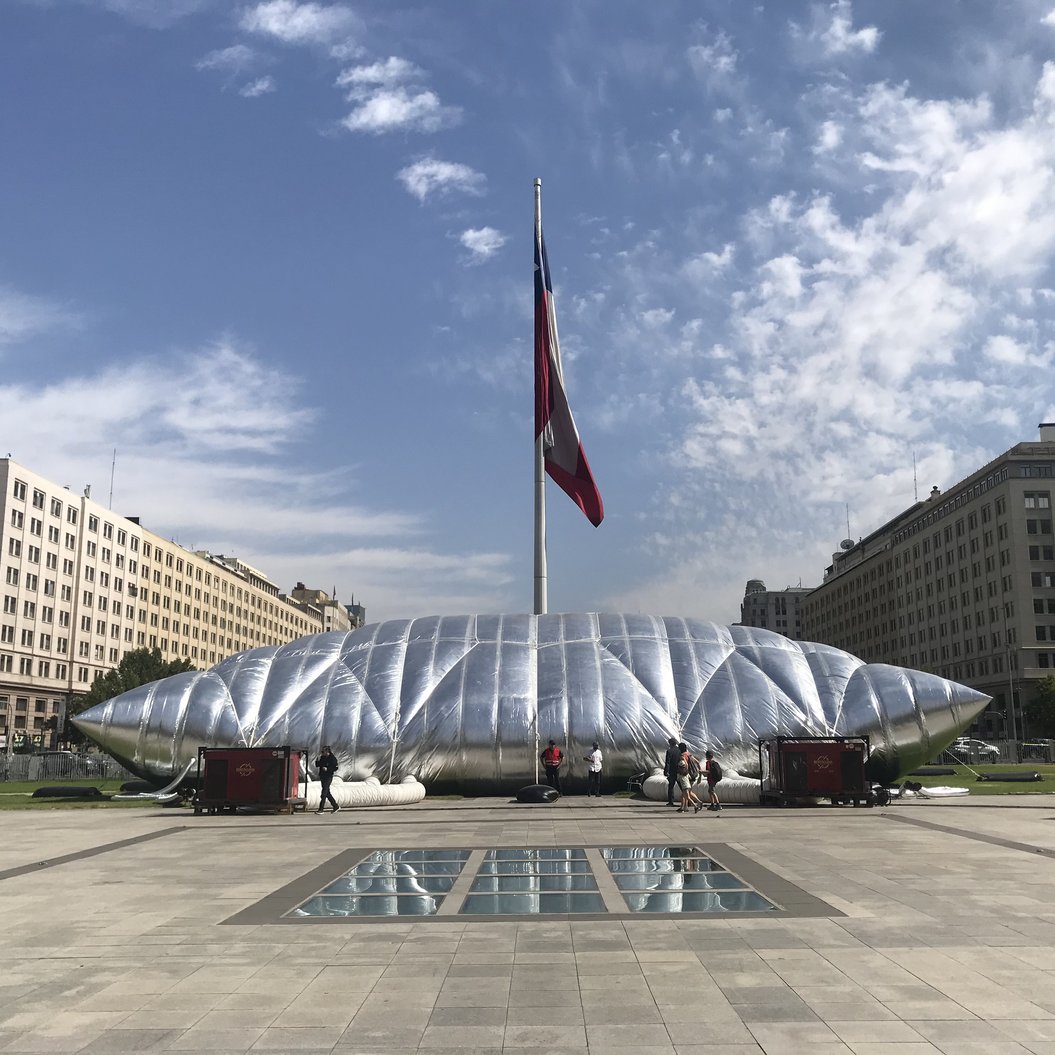Chair of / Cátedra de /
Lehrstuhl für
Archi-
tecture
&
Urban
Design
Prof. Hubert Klumpner
Chair of Architecture and
Urban Design /
Institute of Landscape- and
Urban Studies / LUS
Member of Network City and Landscape / NSL
Co-Director of ETH Wohnforum,
Centre for Architecture
Society and Environment / ETH Wohnforum / ETH CASE
Co-Founder and Members
of Institute of Science
Technology and Policy / ISTP
Member of the ETH Sustainability
Steering Committee
Informal Urbanism Regional
Hub of UN-Habitat Universities
'Educational Biodigestor' Pavilion @XXI Biennial of Architecture and Urbanism of Chile, "Vulnerable Habitats"
“Pabellon Diodigestor Educativo"
This public space research project integrates science and art, developed by Pablo Levine (Klumpner Chair of Architecture and Urban Design, ETHZ), hit an important milestone on January 17, during the XXI Biennial of Architecture of Chile, "Vulnerable Habitats". The project was set up as an inflatable auditorium structure designed by acclaimed Chilean architect Smilian Radic, in front of "La Moneda", the government palace. The debate that took place inside the auditorium included two Mayors - Iraci Hassler from the commune of Santiago, and Claudia Pizarro from the commune of La Pintana. Both communes - one central and the other peripheral - represent the uniqueness of Santiago, a union of territories very different from each other, in cohesion without the figure of an overarching Mayor.
Prototyping and Scaling - An Organic Transition In Chile and Latin America
The figure of 145 thousand tons/day highlights the worrying degree to which tons of organic waste that are still deposited untreated in landfills, affecting the lives of 170 million people in the region, and producing thousands of tons of CO2 emissions. Addressing the possibility of speeding up the deadlines imposed by authorities and governmental institutions, the idea of the project is to regenerate neighborhoods through the development and implementation of tangible and intangible infrastructures that transform urban organic waste. The method involves doing this in a decentralized manner and with the active participation of local communities, into usable resources for the inhabitants, thus generating, for the territory, a series of "public goods" of community and regional scope that the market alone is not capable of providing. This involves, for example, lighting for public spaces or even methane gas to run communal kitchens in vulnerable community centers. Through these processes, inhabitants which need to be educated in new modes of waste disposal, such as separating waste at home to be used properly for these purposes, will be welcome in a public educational biodigester pavilion, whose purpose is also to reactivate the use of public spaces in serious danger due to the post-pandemic confinement.
Name
Bioplaza // “Pabellon Diodigestor Educativo"
Year
2021-2023
Authors
Proposal:
Prof. Hubert Klumpner (ETH Zürich)
Pablo Levine Mardones (PUC)
Thalia Reyes (FAU)
Cátedra de arquitectura y urbanismo ETH Zürich
Associated Architects (Chile)
gt2P
Sebastián Rosas, Guillermo Parada, Tamara Pérez, Víctor Imperiale, Sebastián Gonzáles y Lucas Helle
Systems Engineering of Process
Prosus
Felipe Diaz Alvarado Phd U. de Chile
Estudiantes a cargo de construir prototipo marcha blanca
Javiera Carrasco y Ángela Pottstock
Asesoría creativa
Claudio Letelier
Sponsorship
Fondos concursables Centro Latinoamericano-Suizo (CLS-HSG) Universidad de St. Gallen, Suiza
Alcaldía Ilustre municipalidad de Santiago








